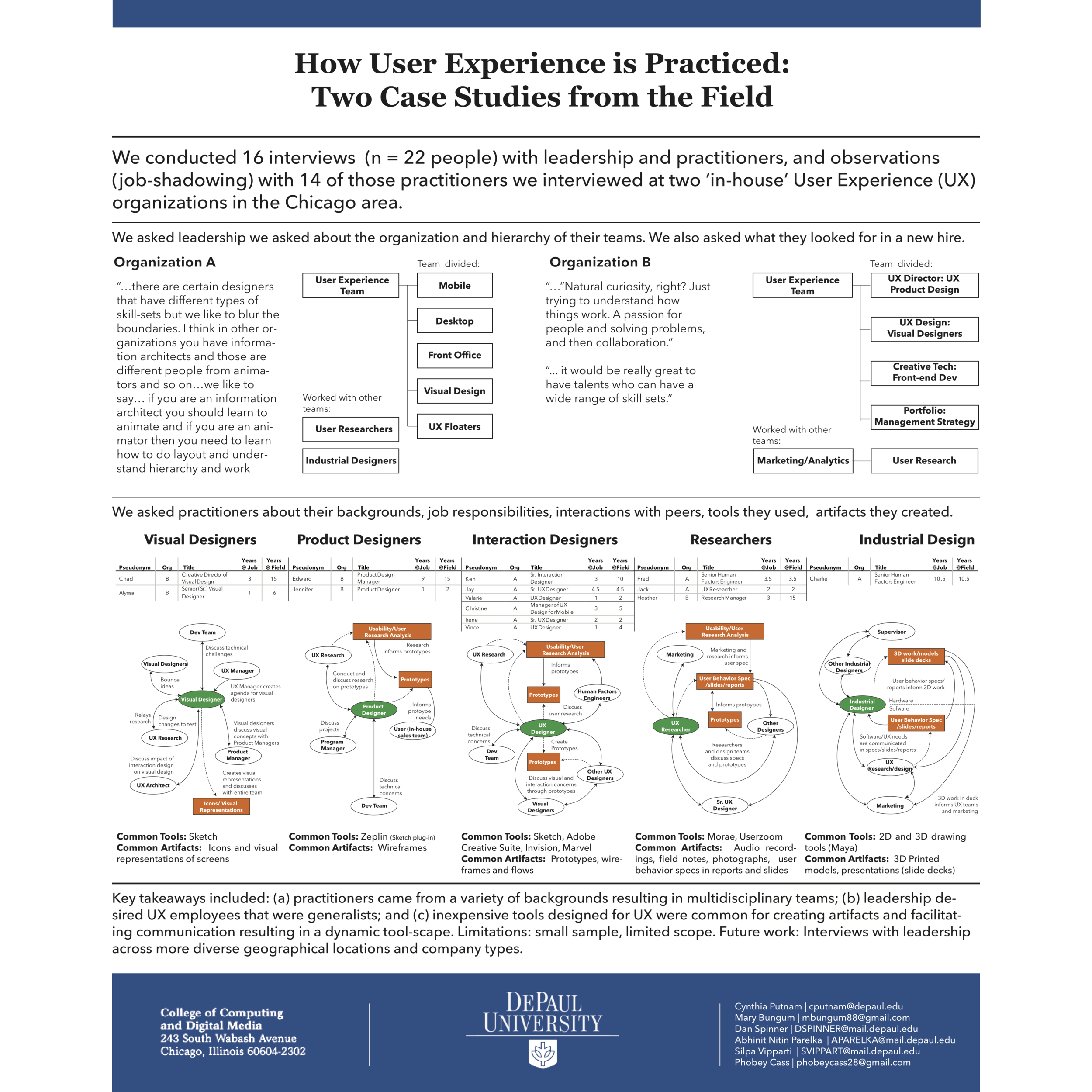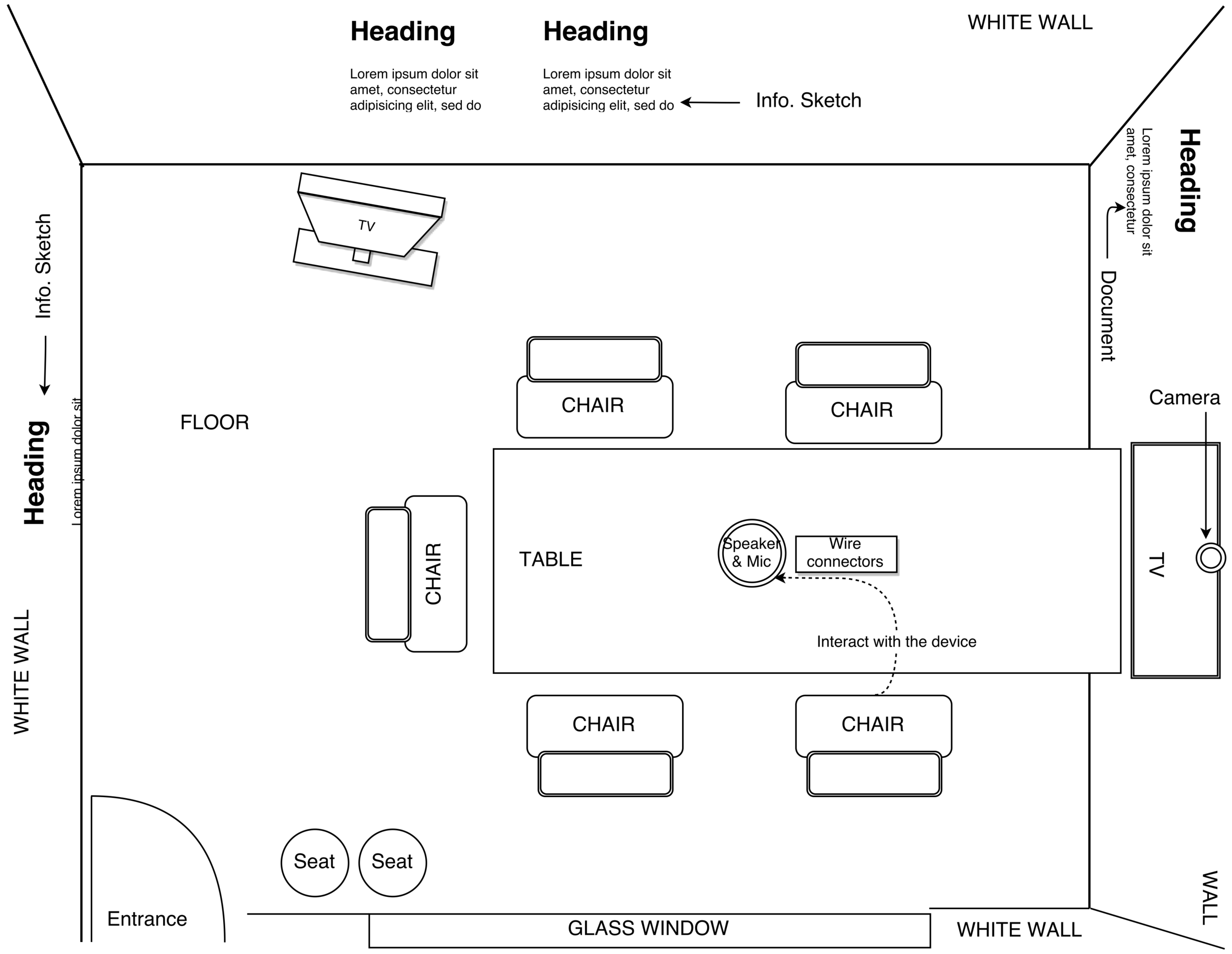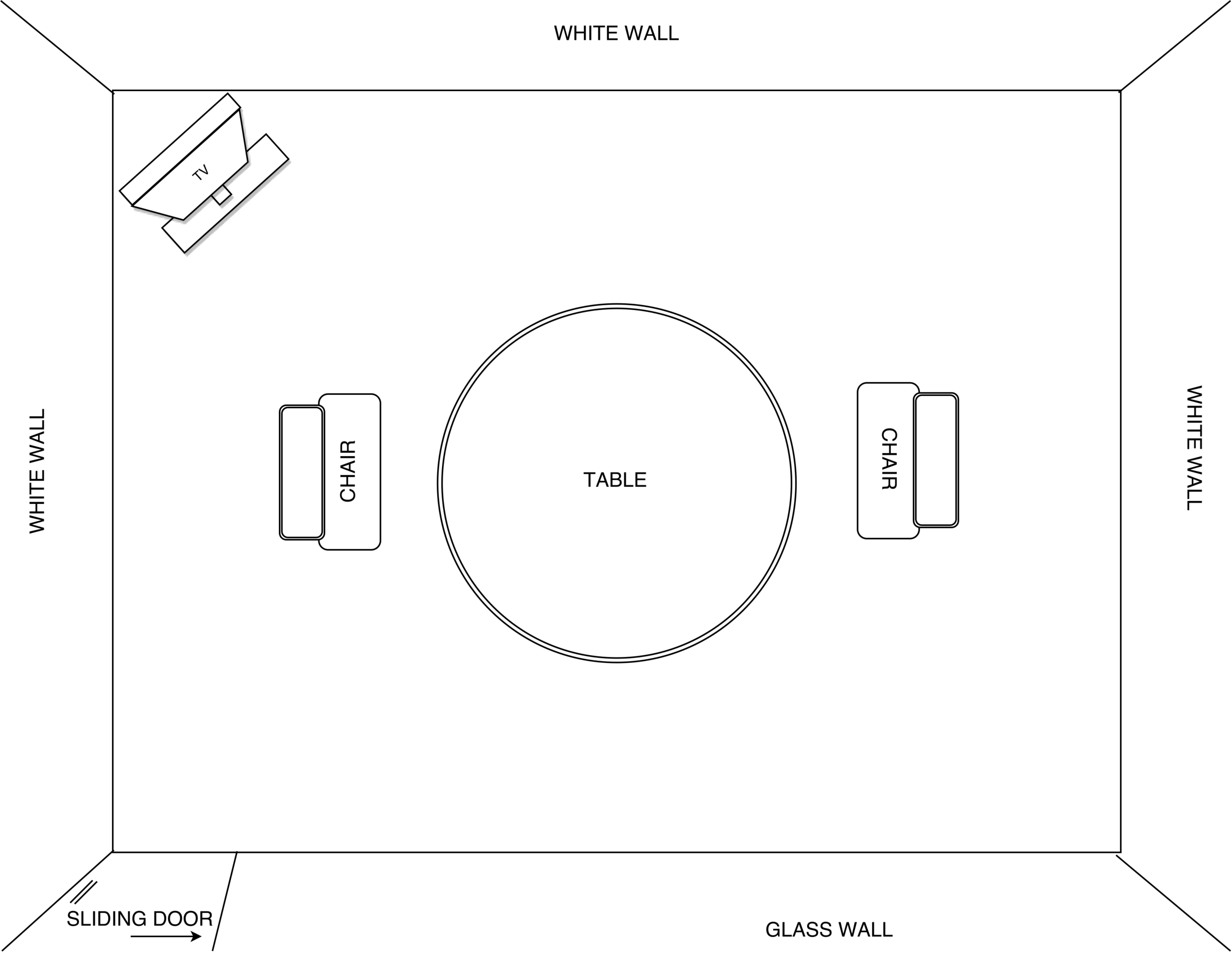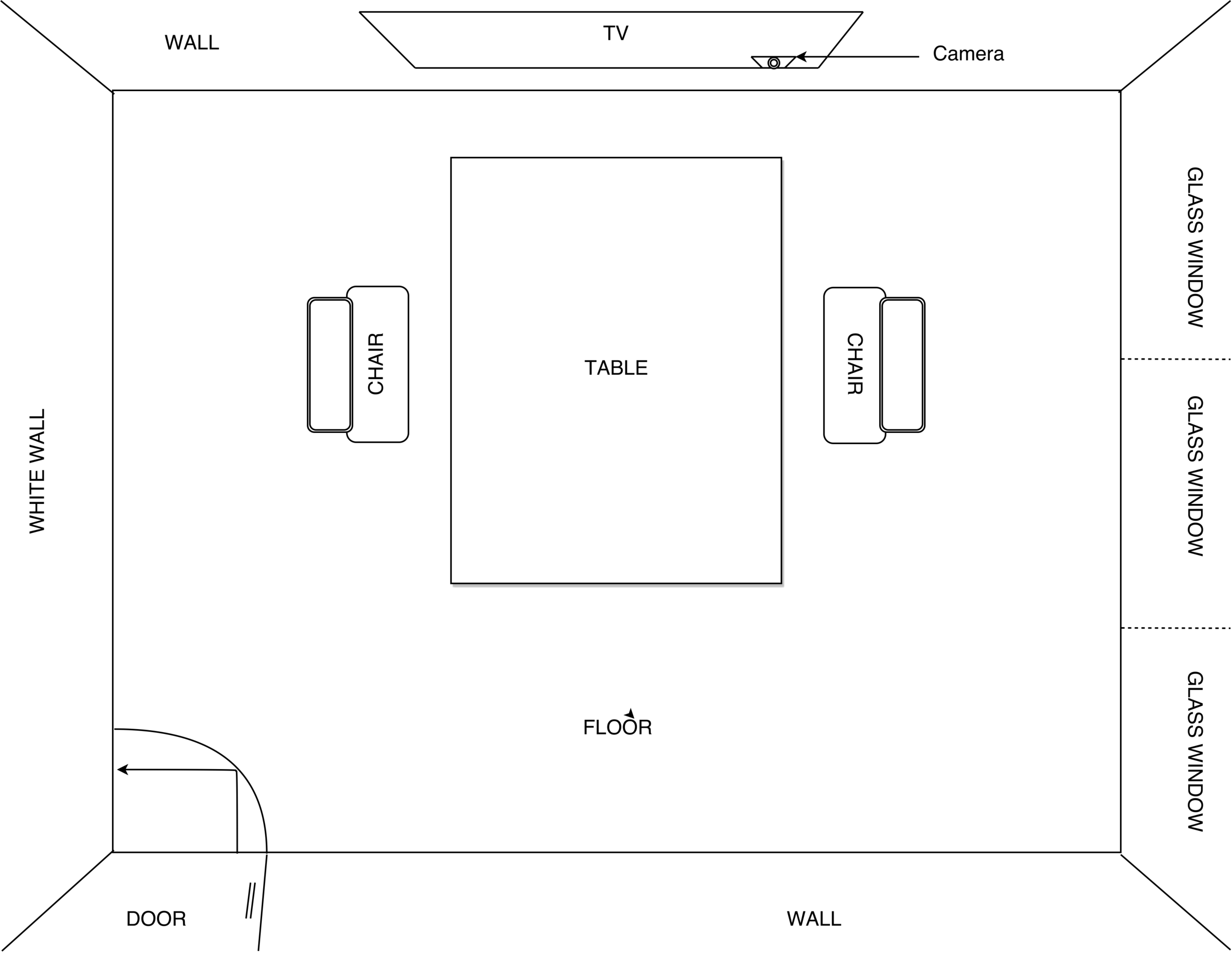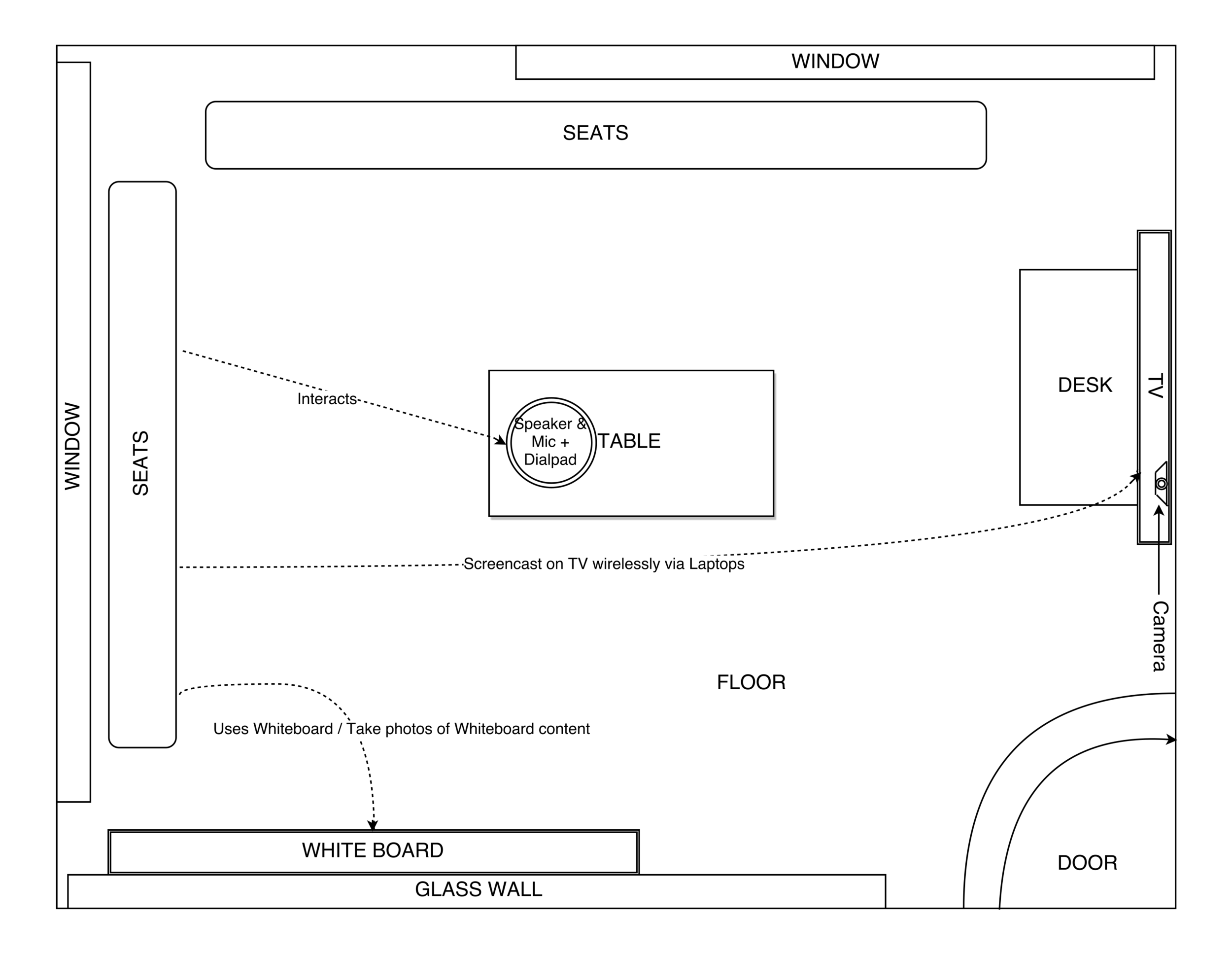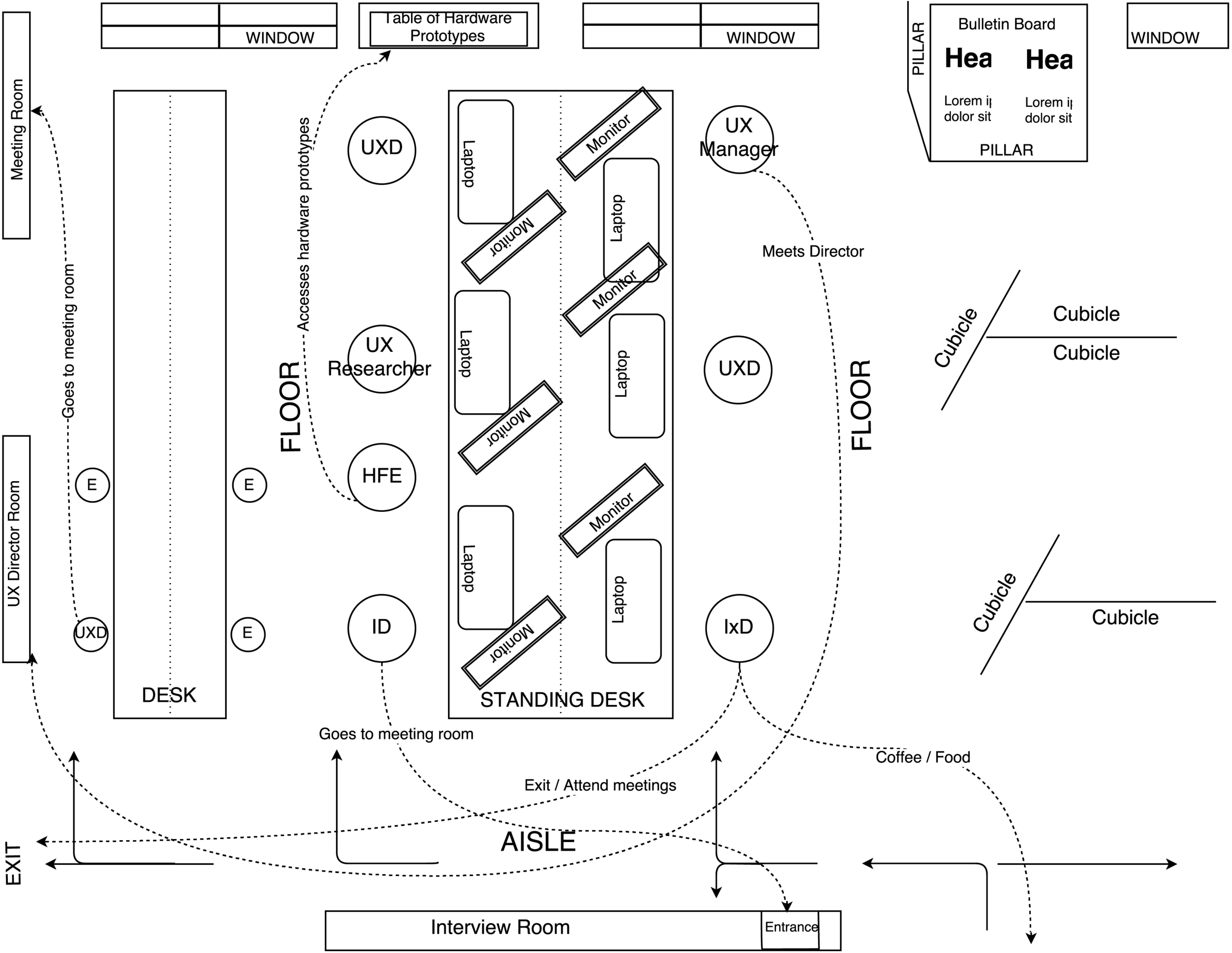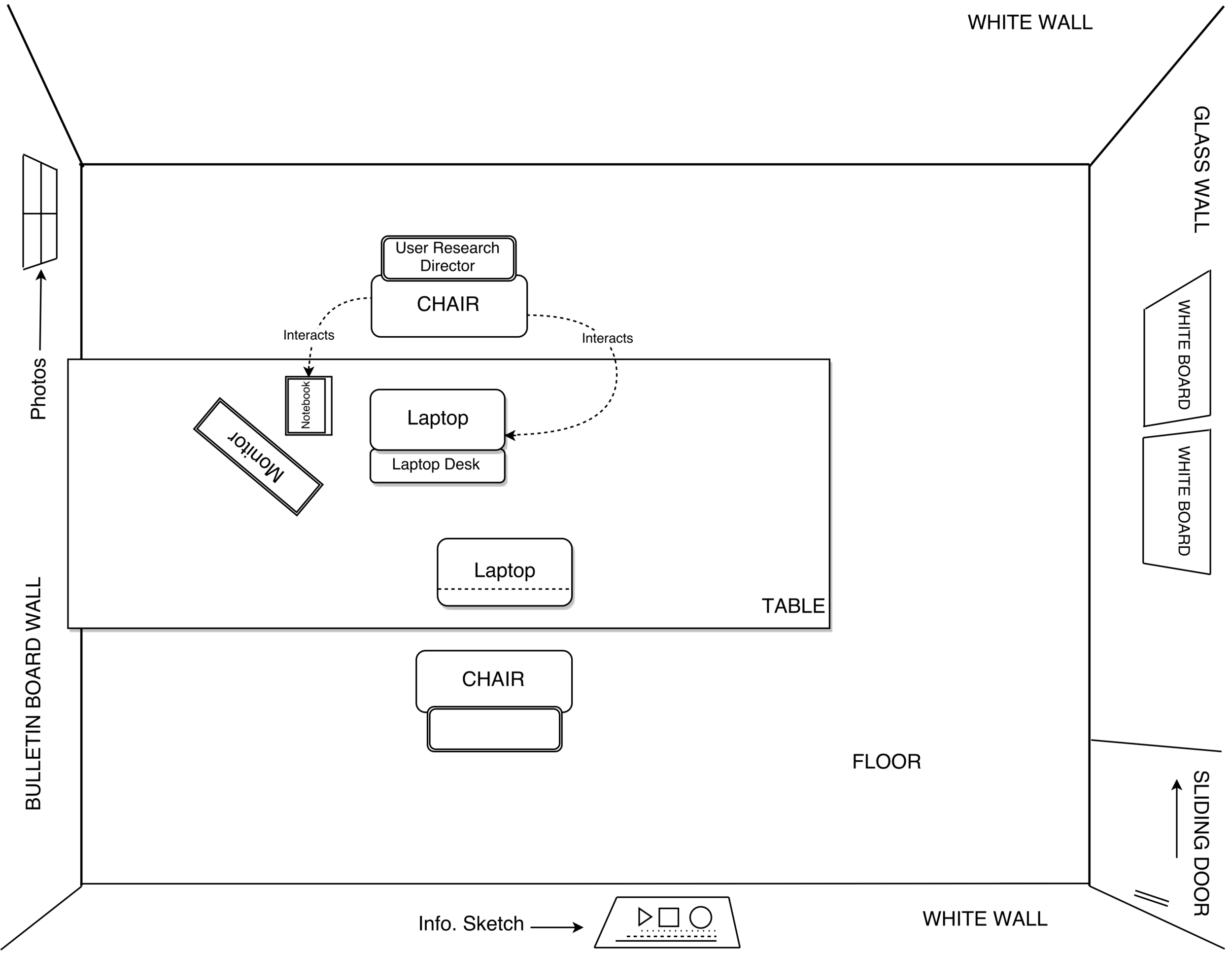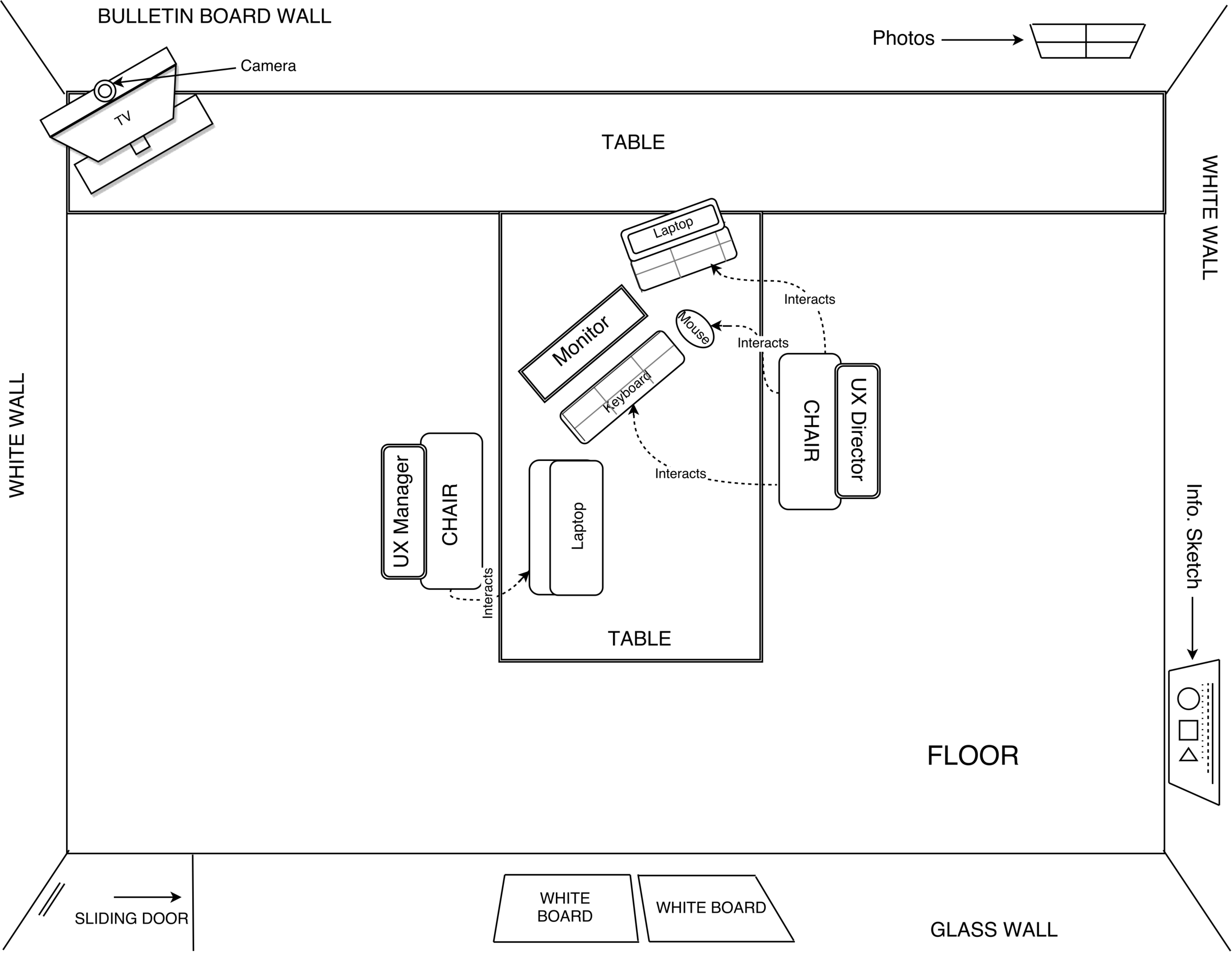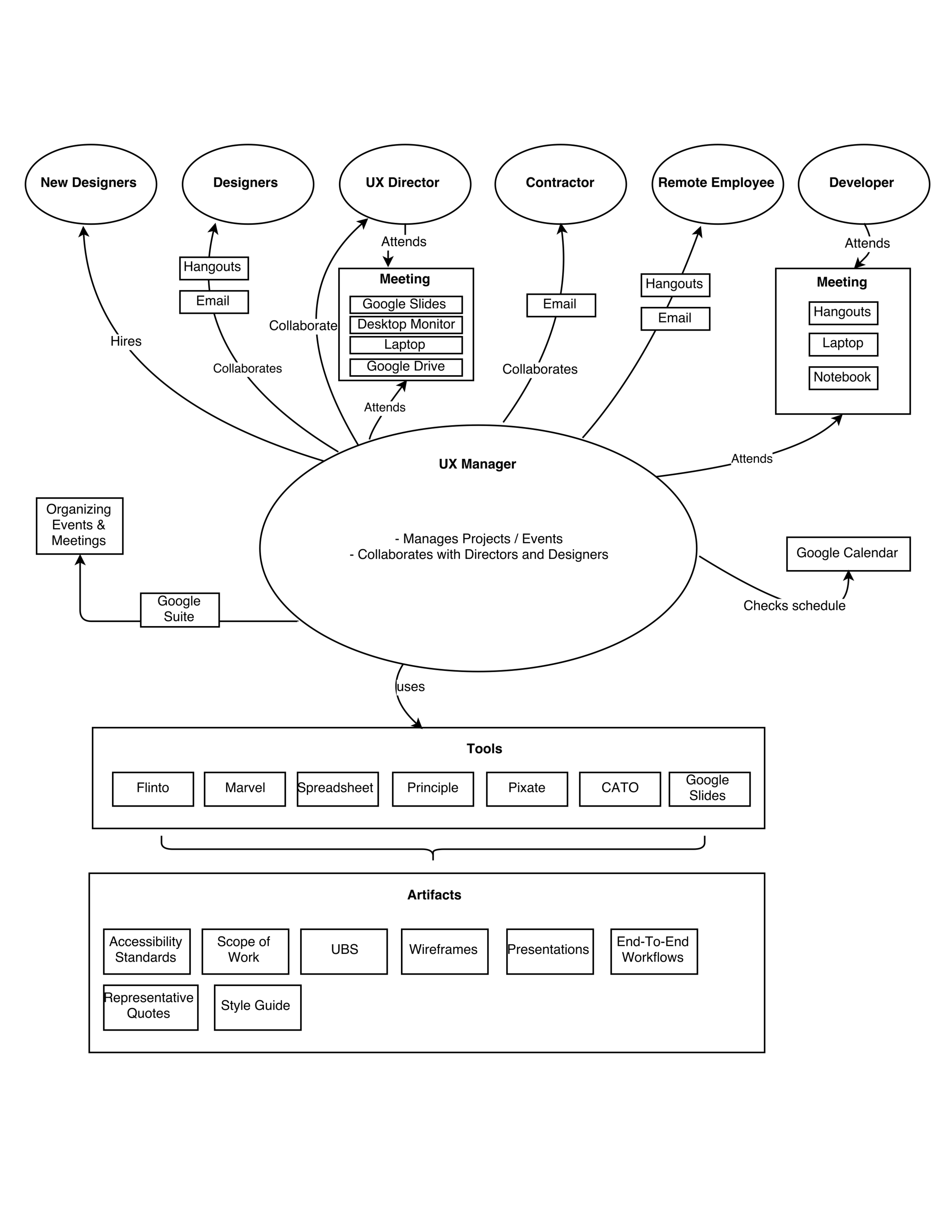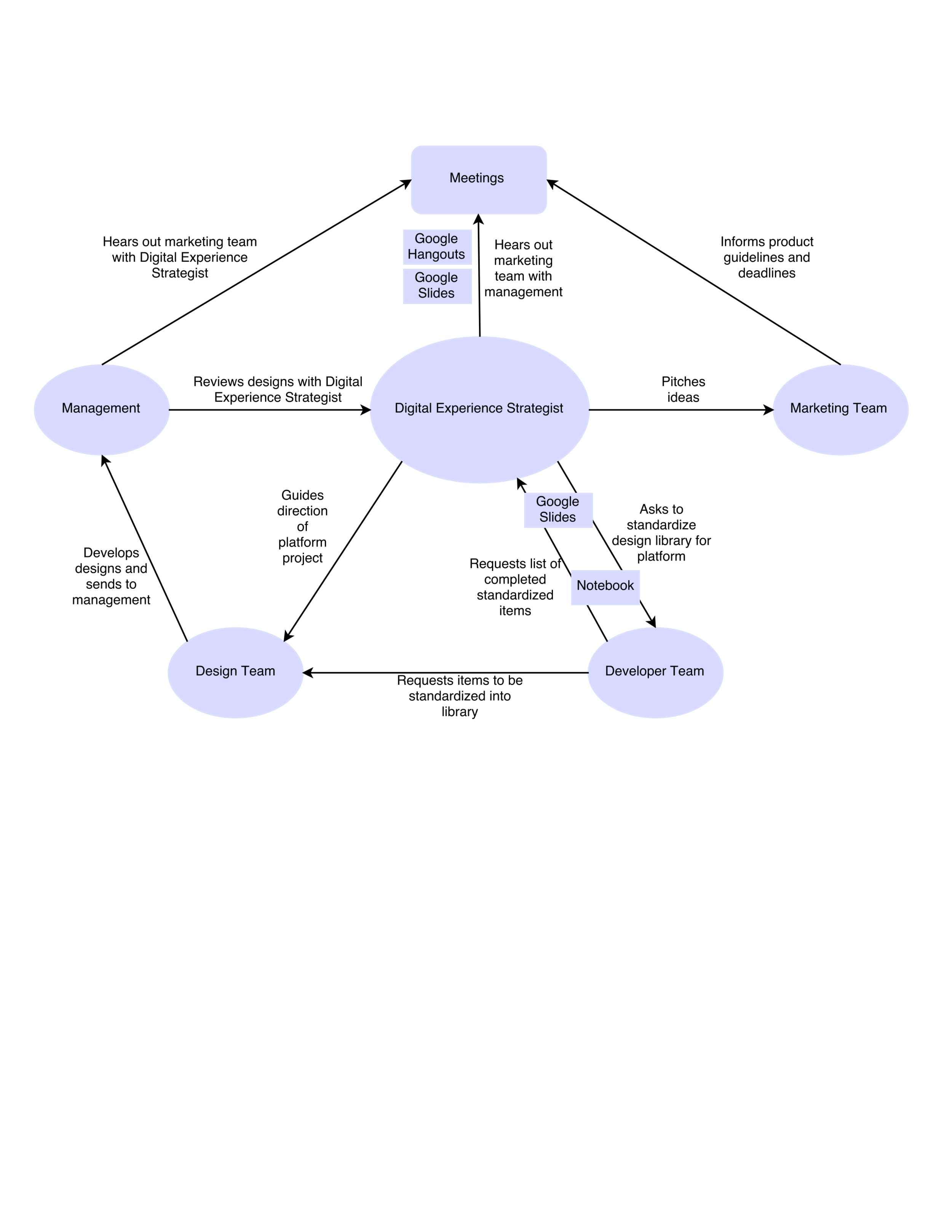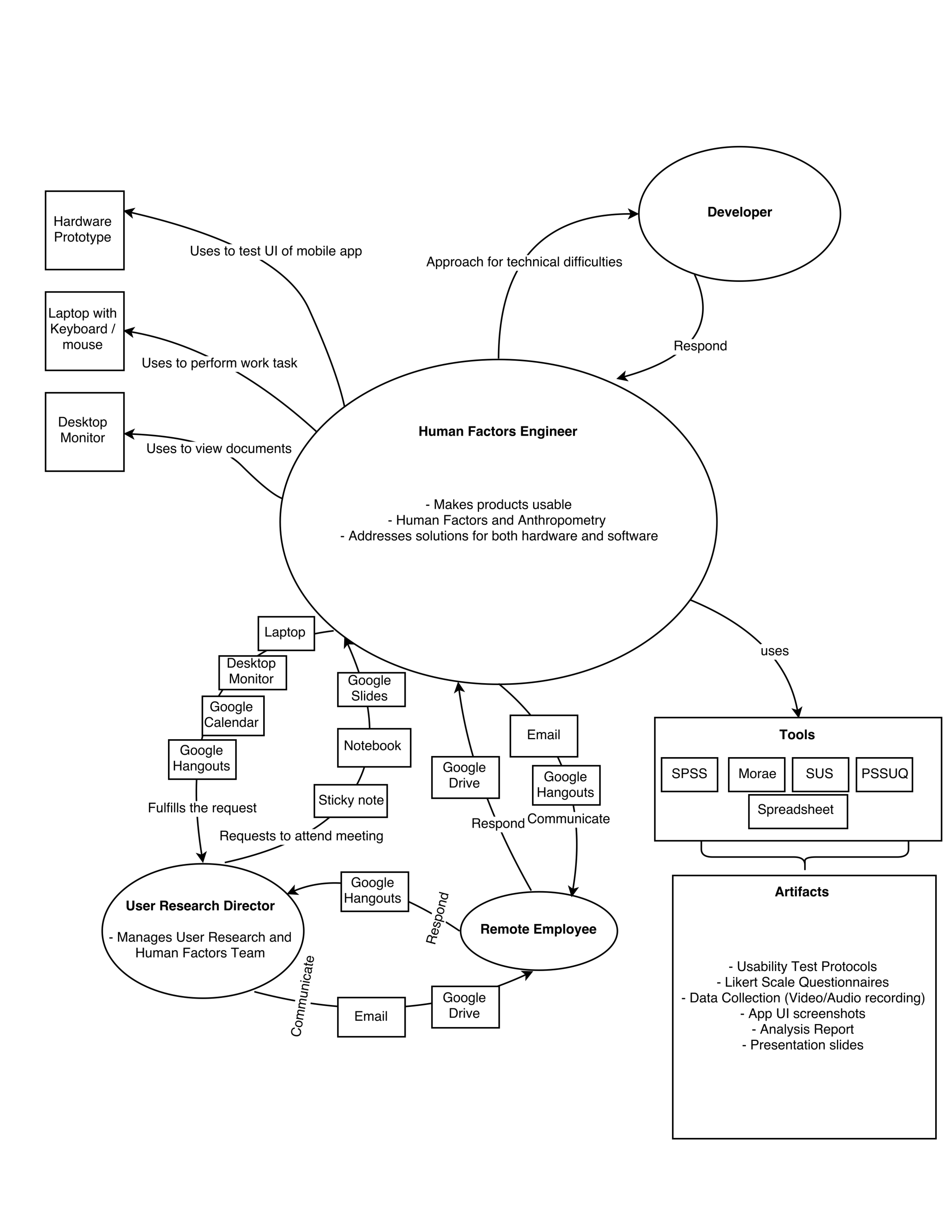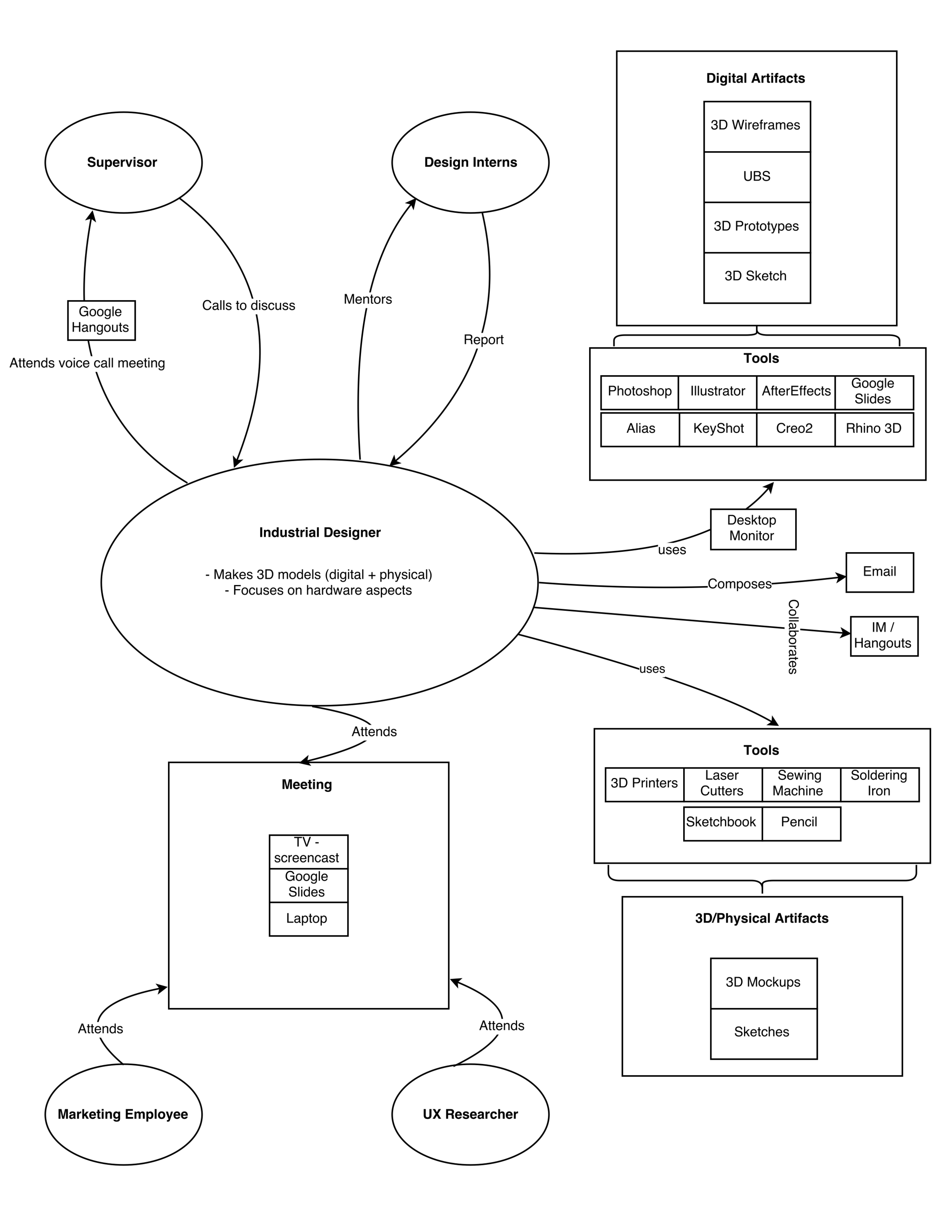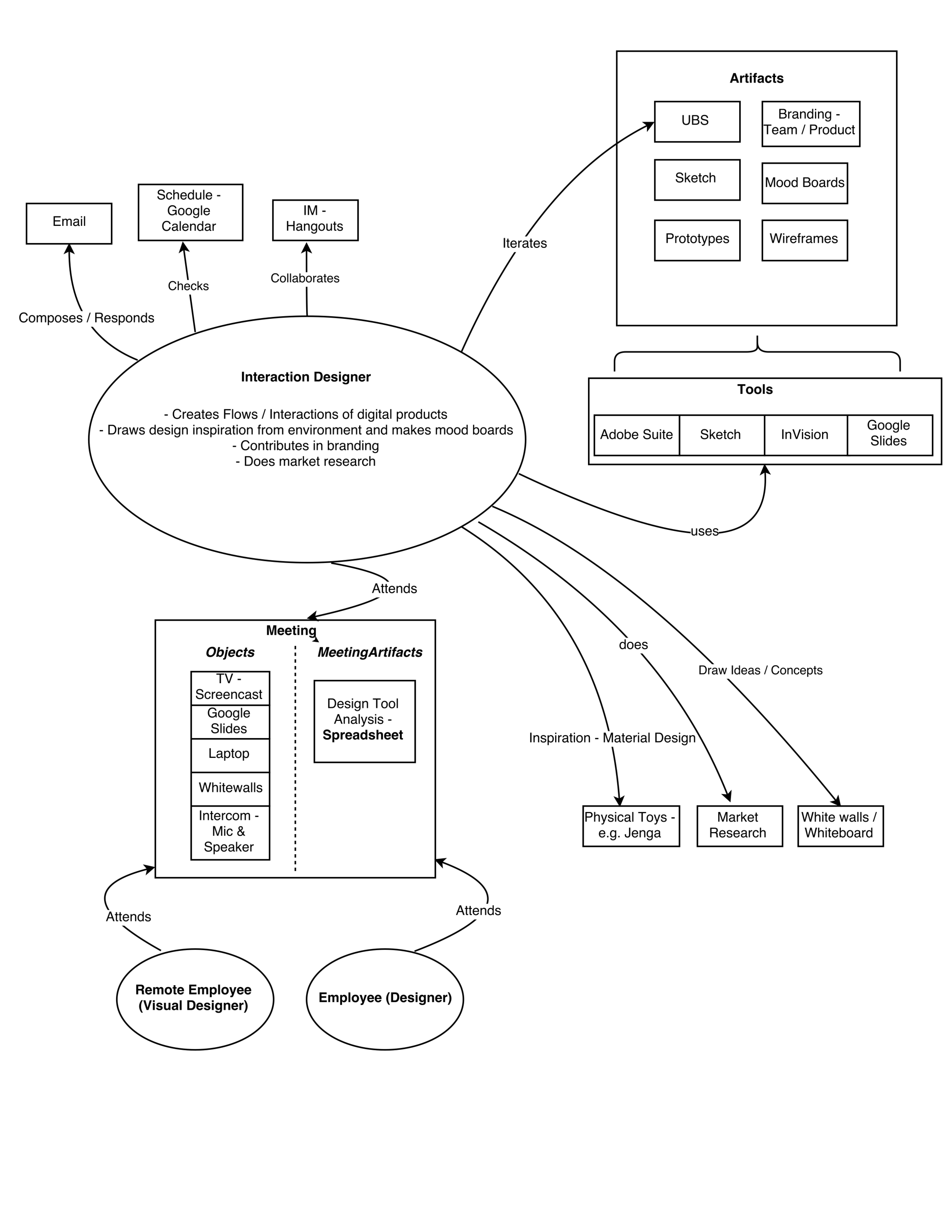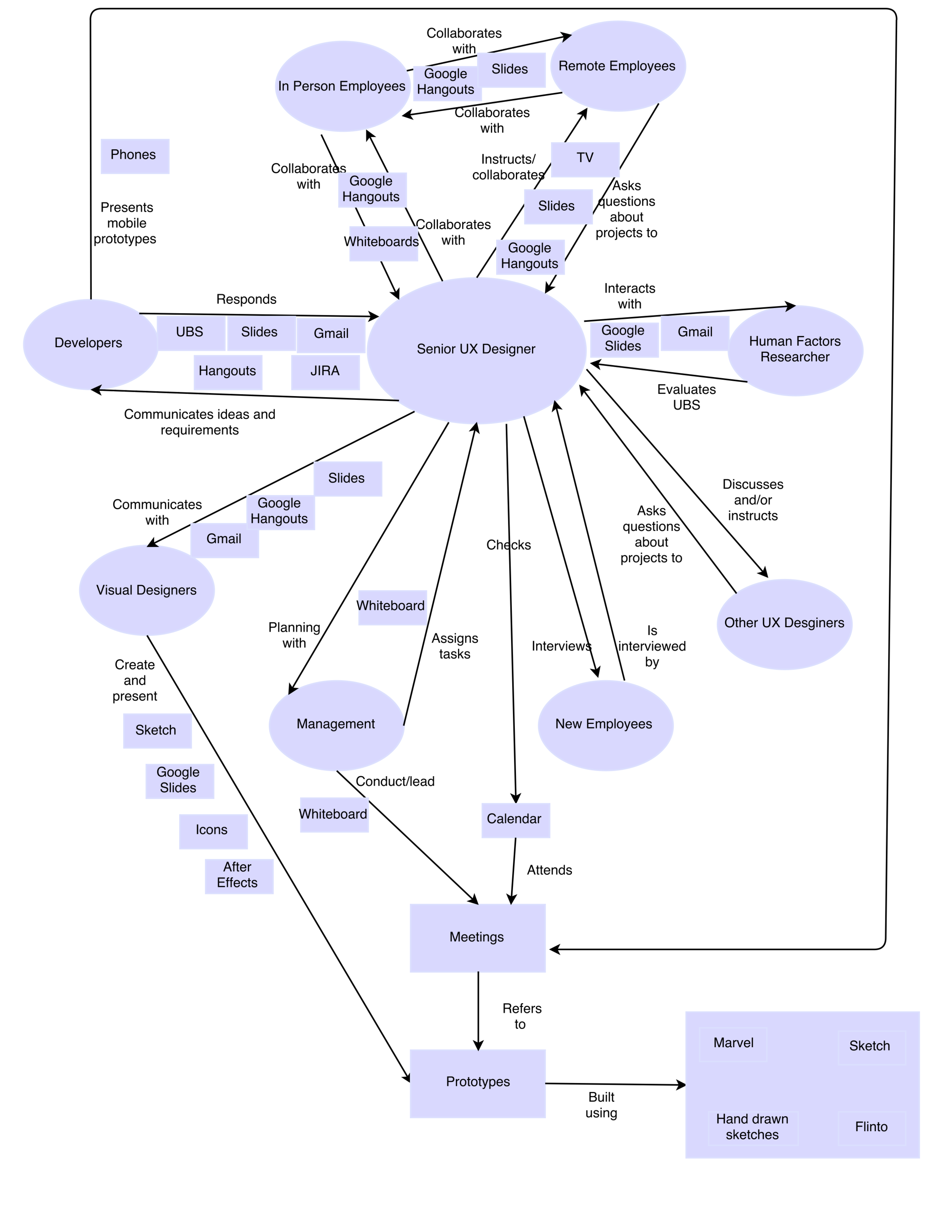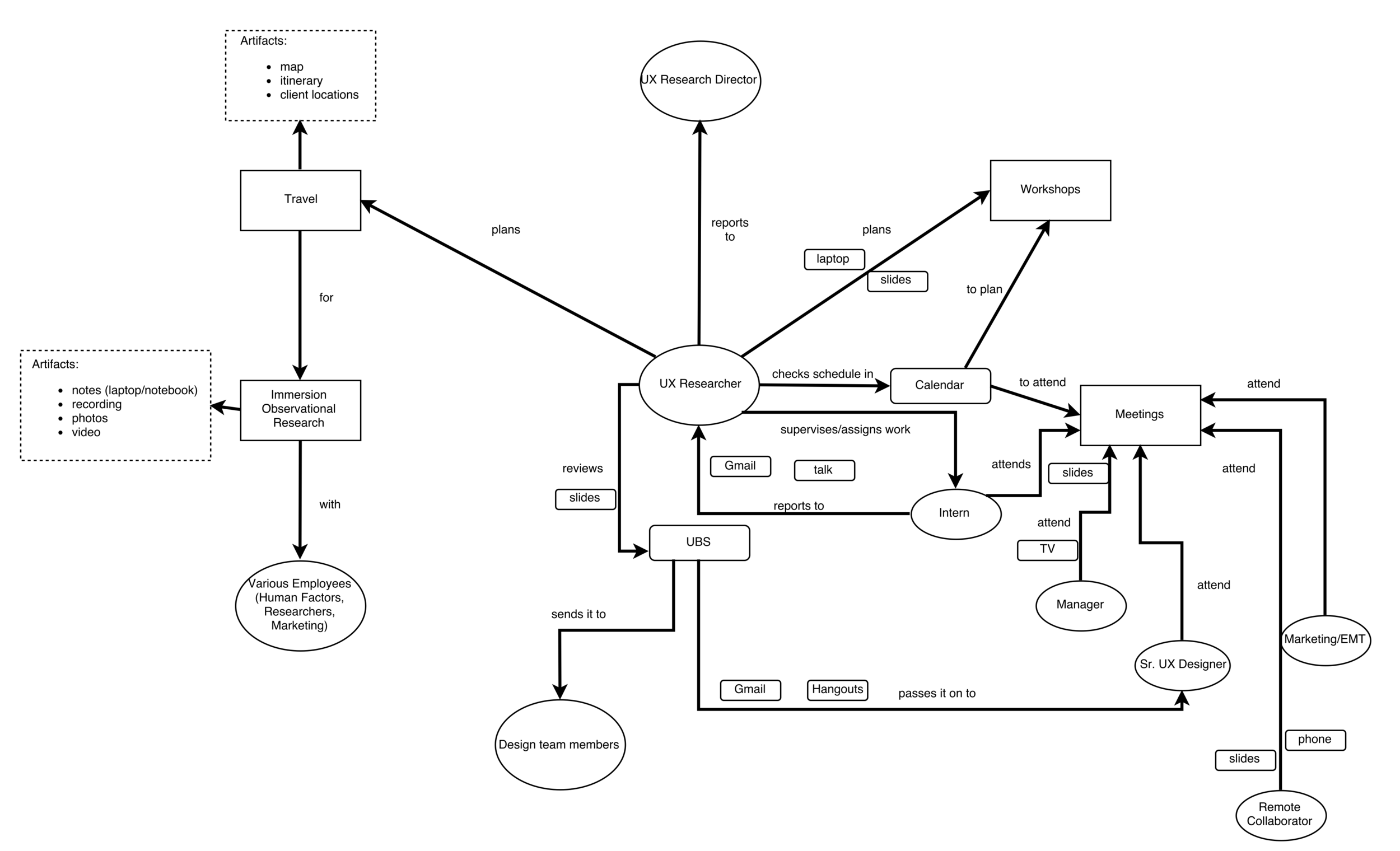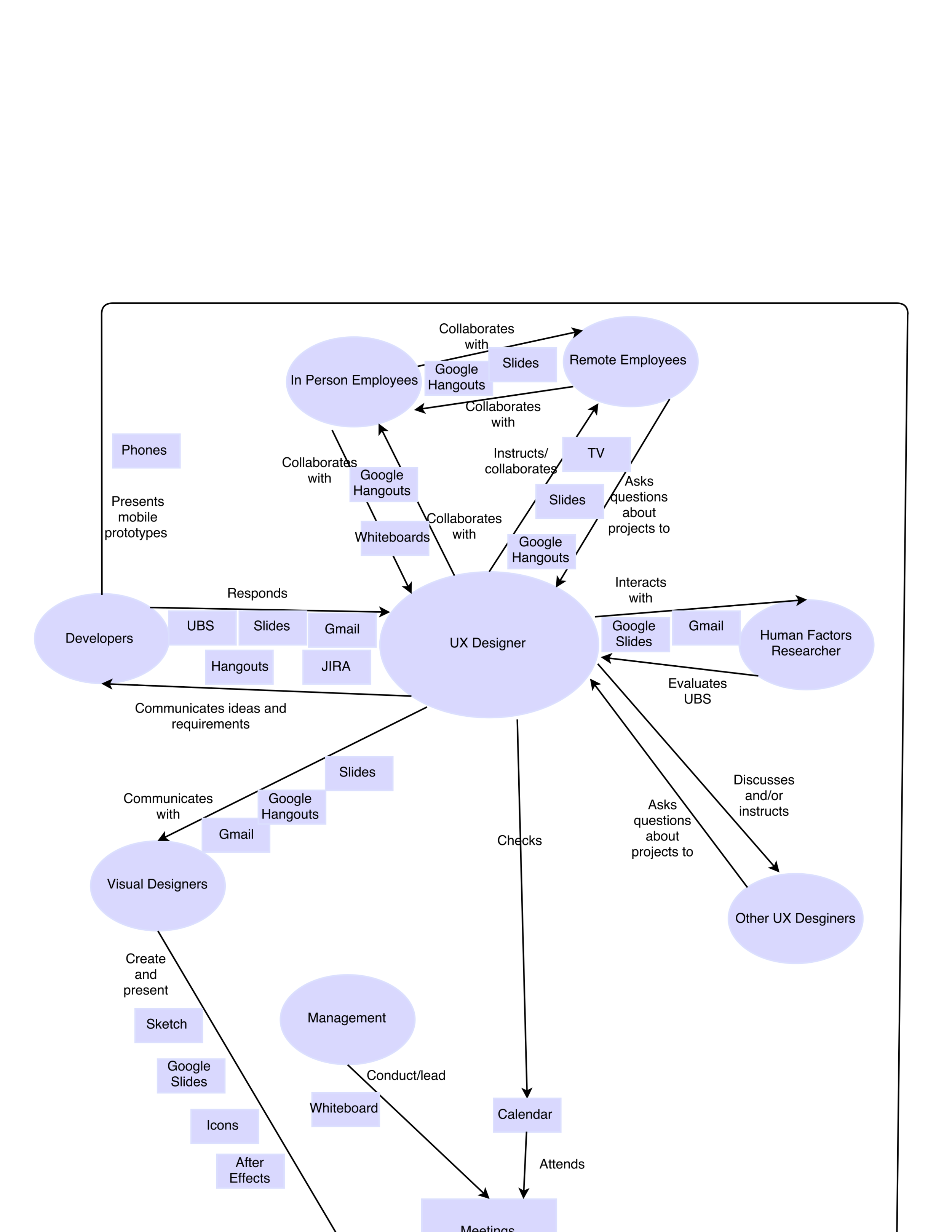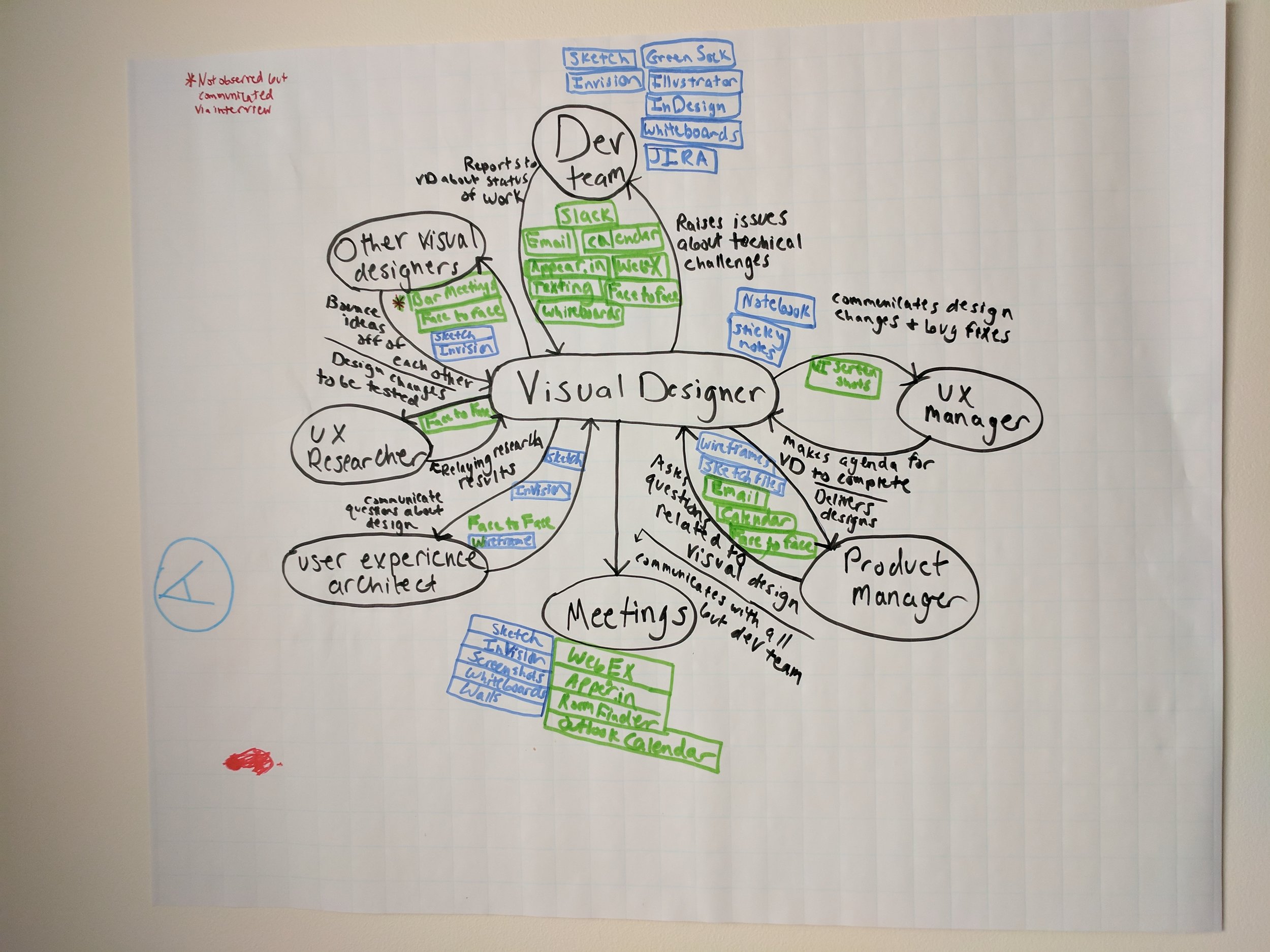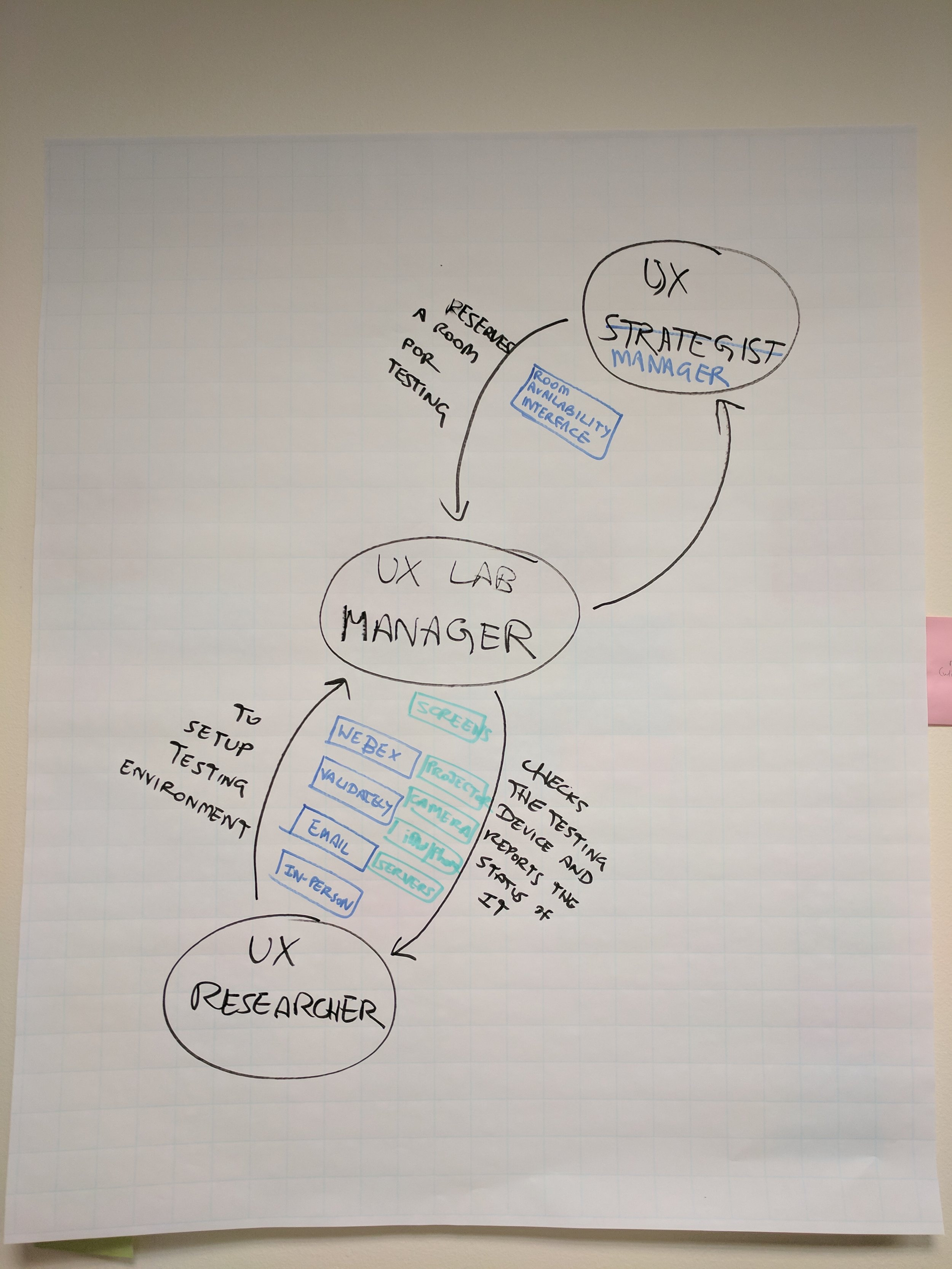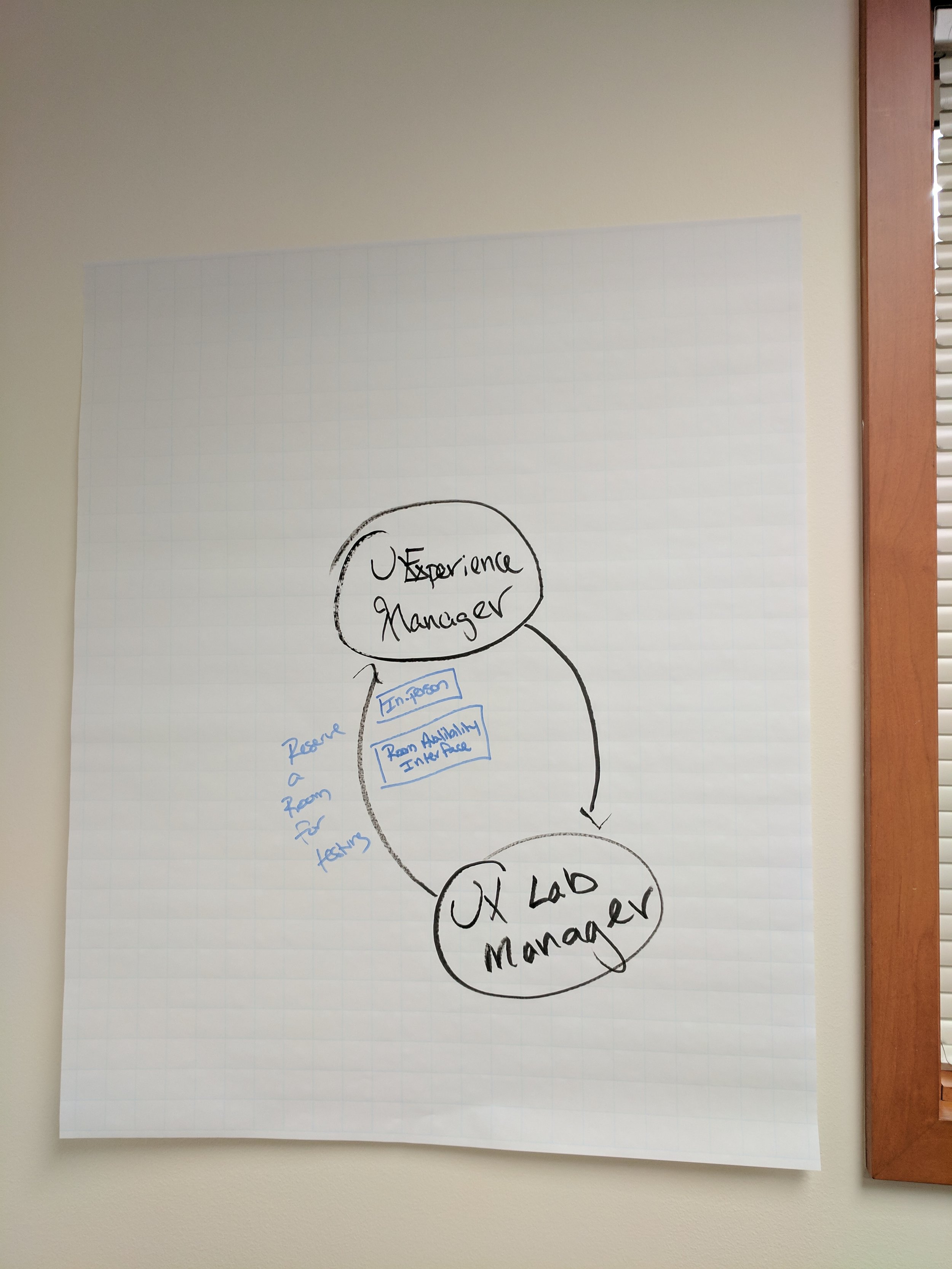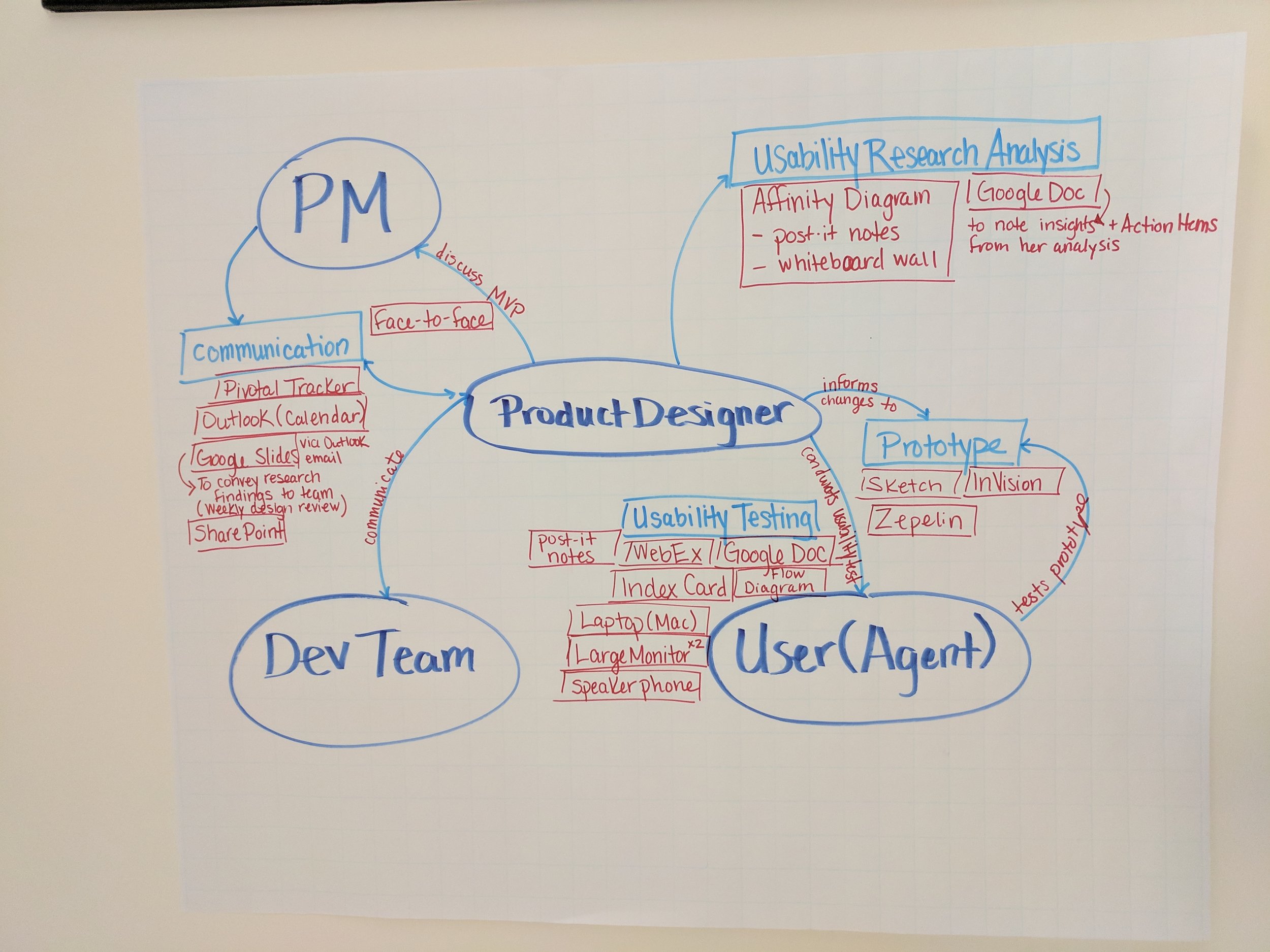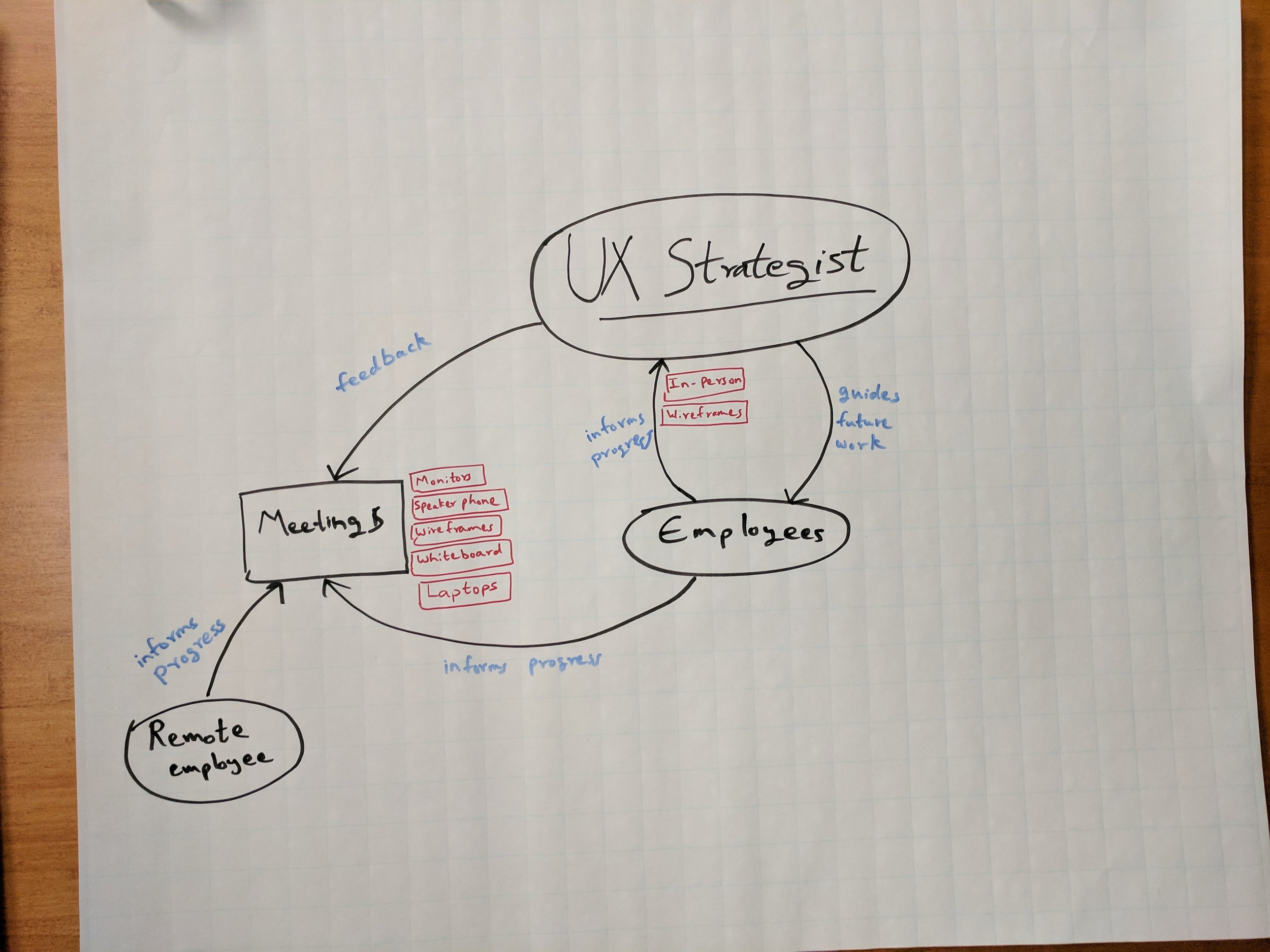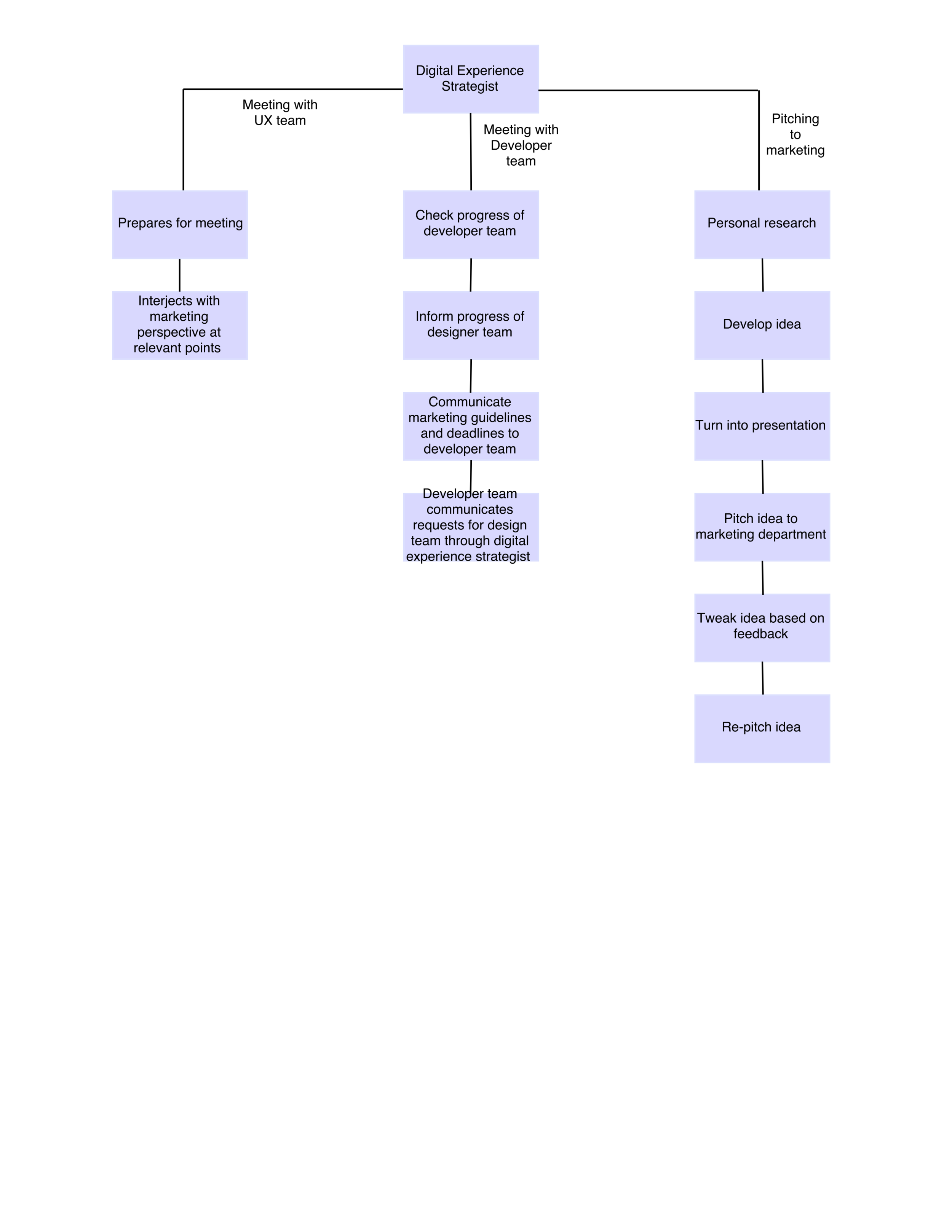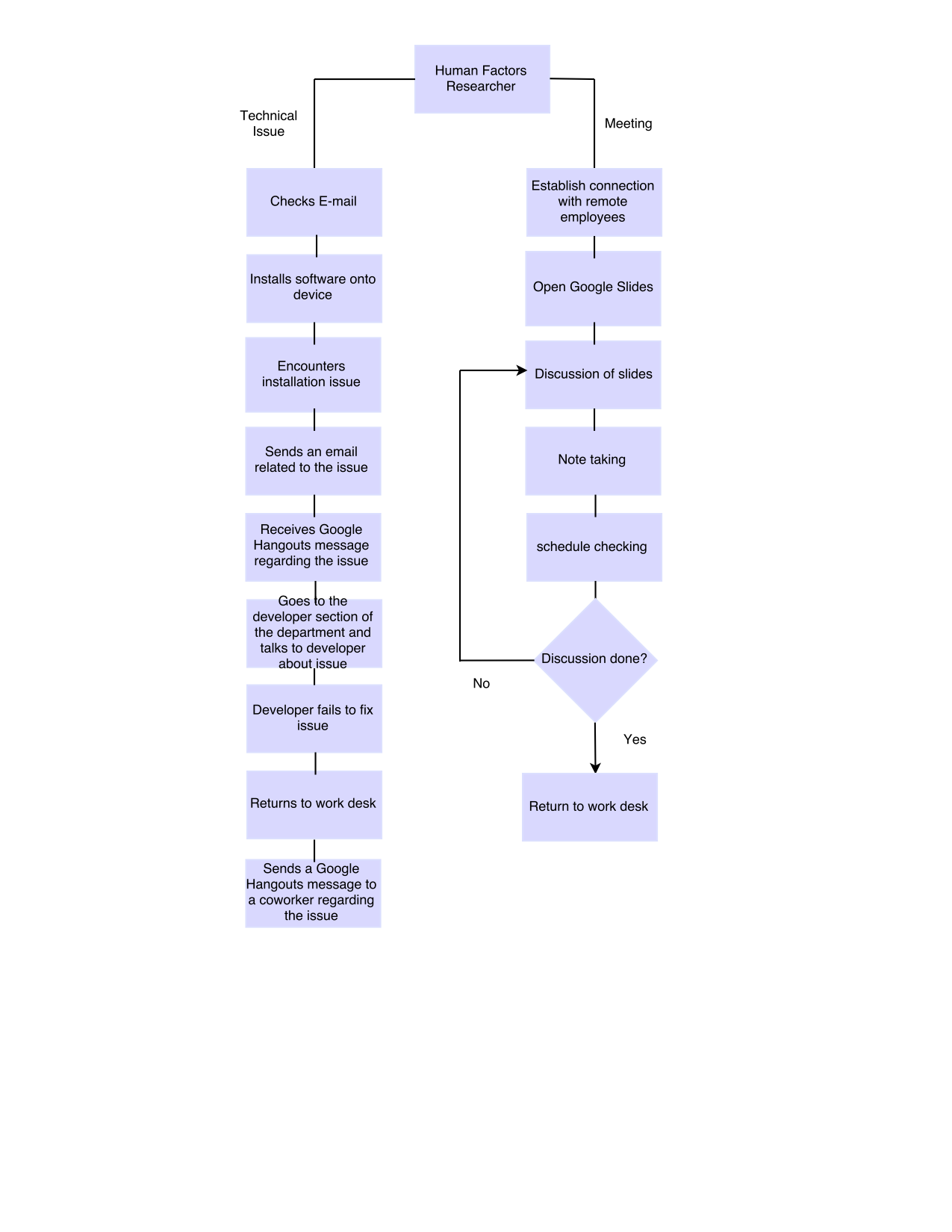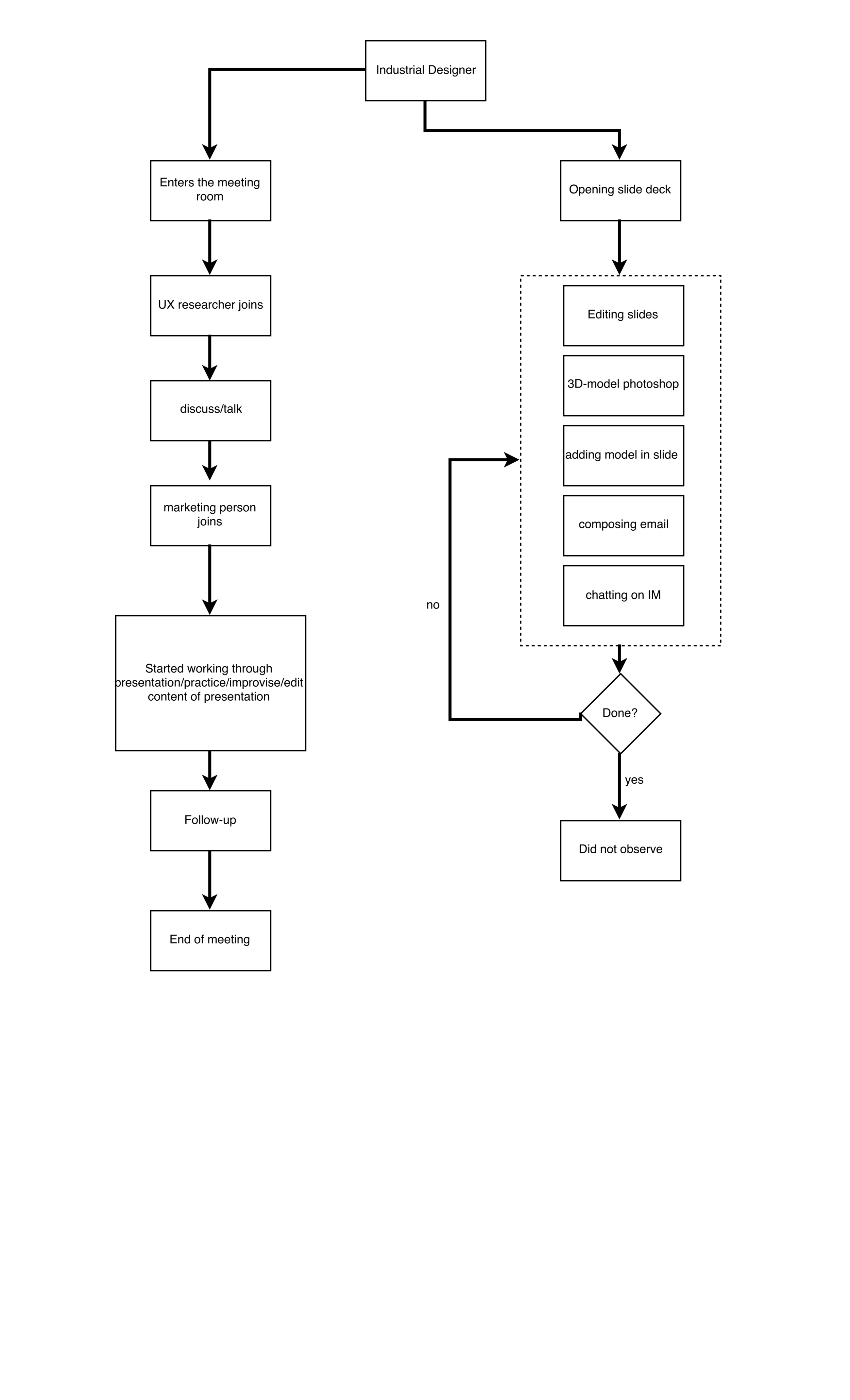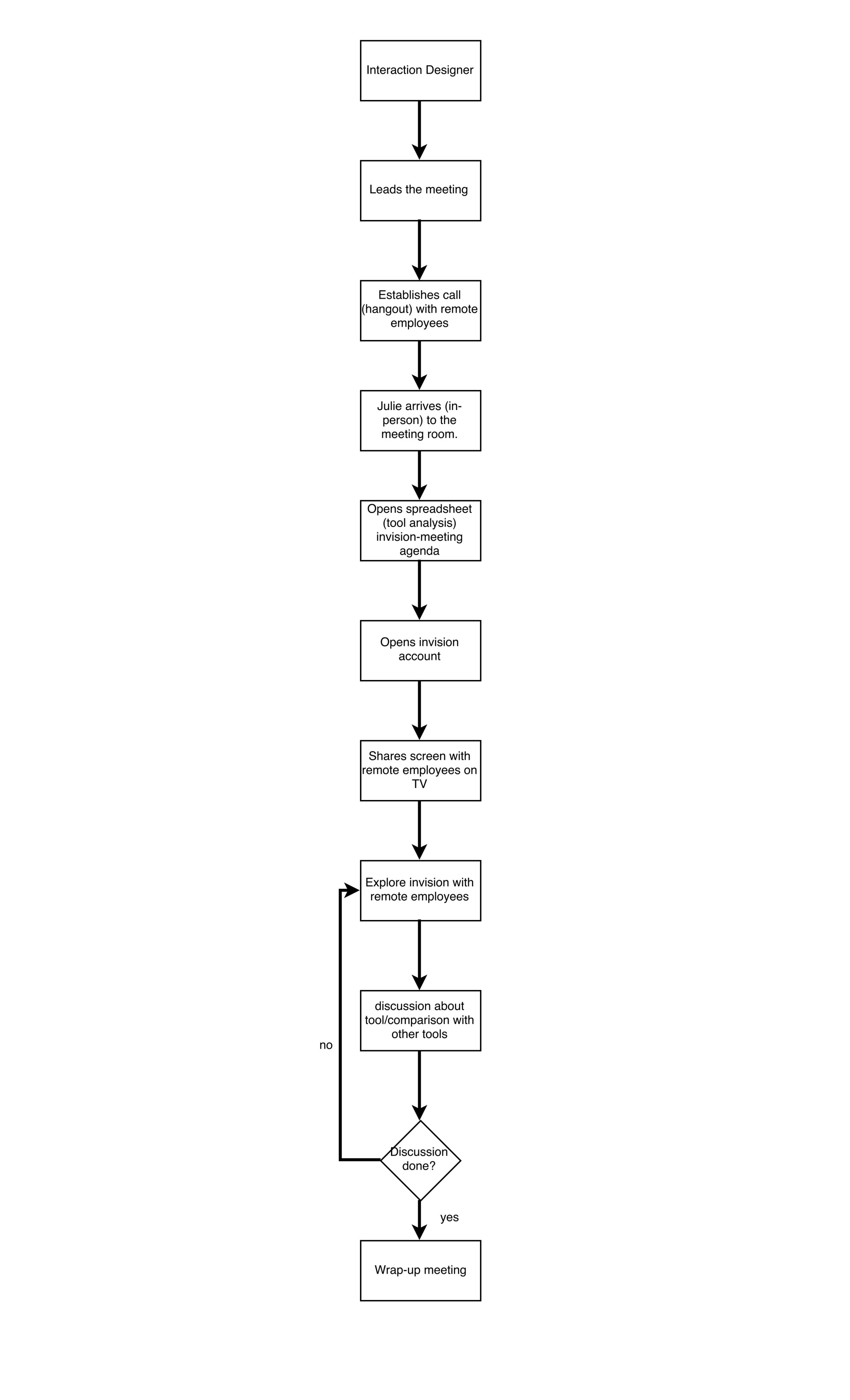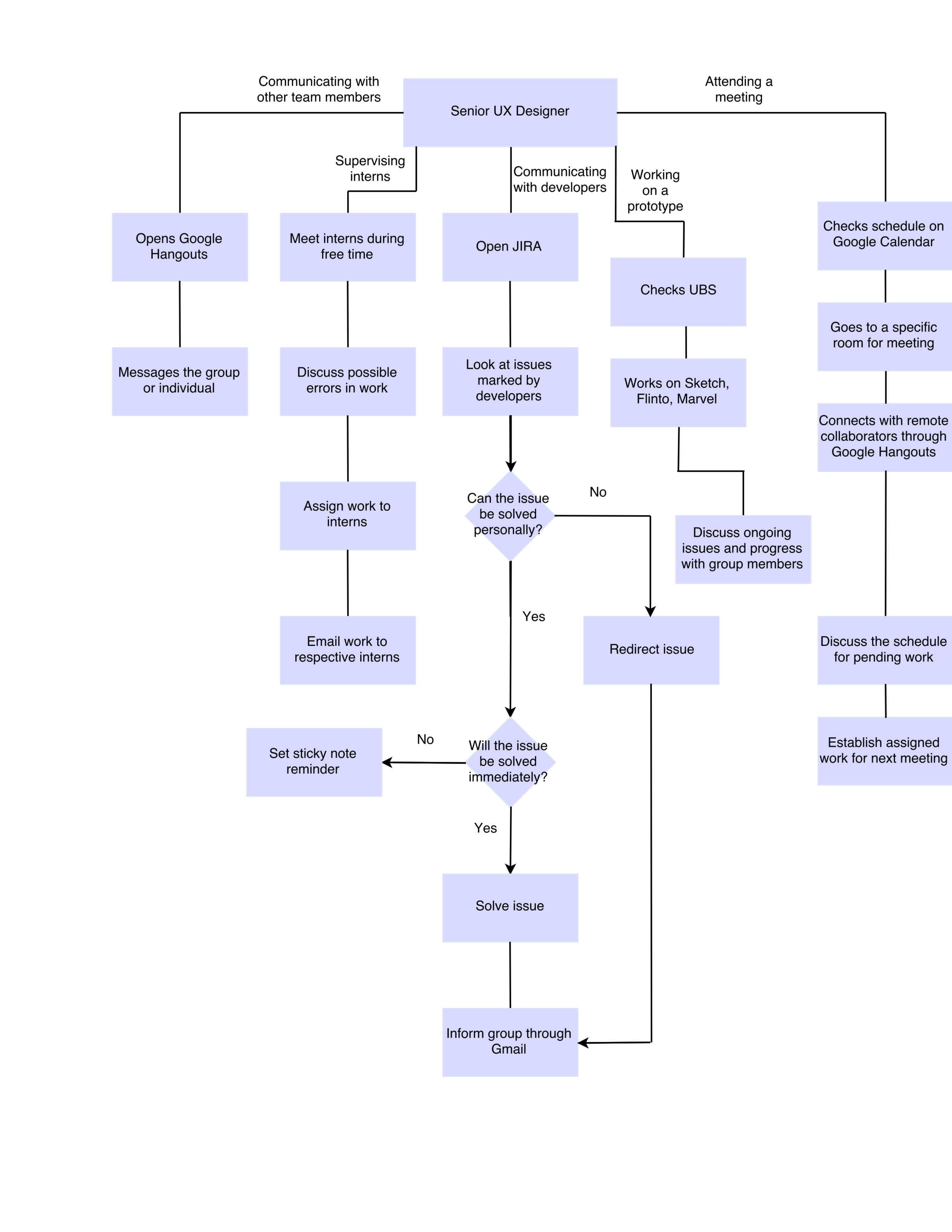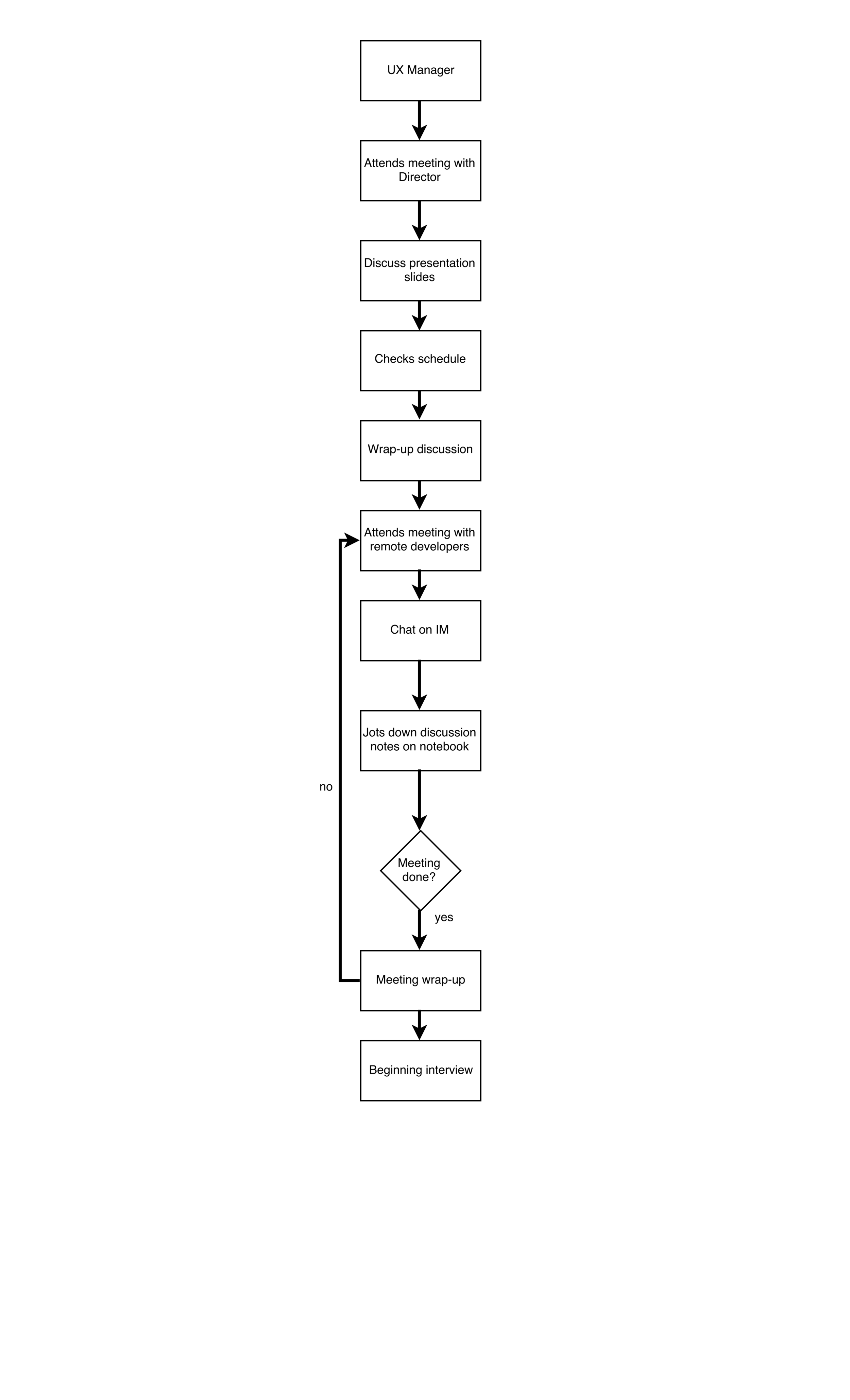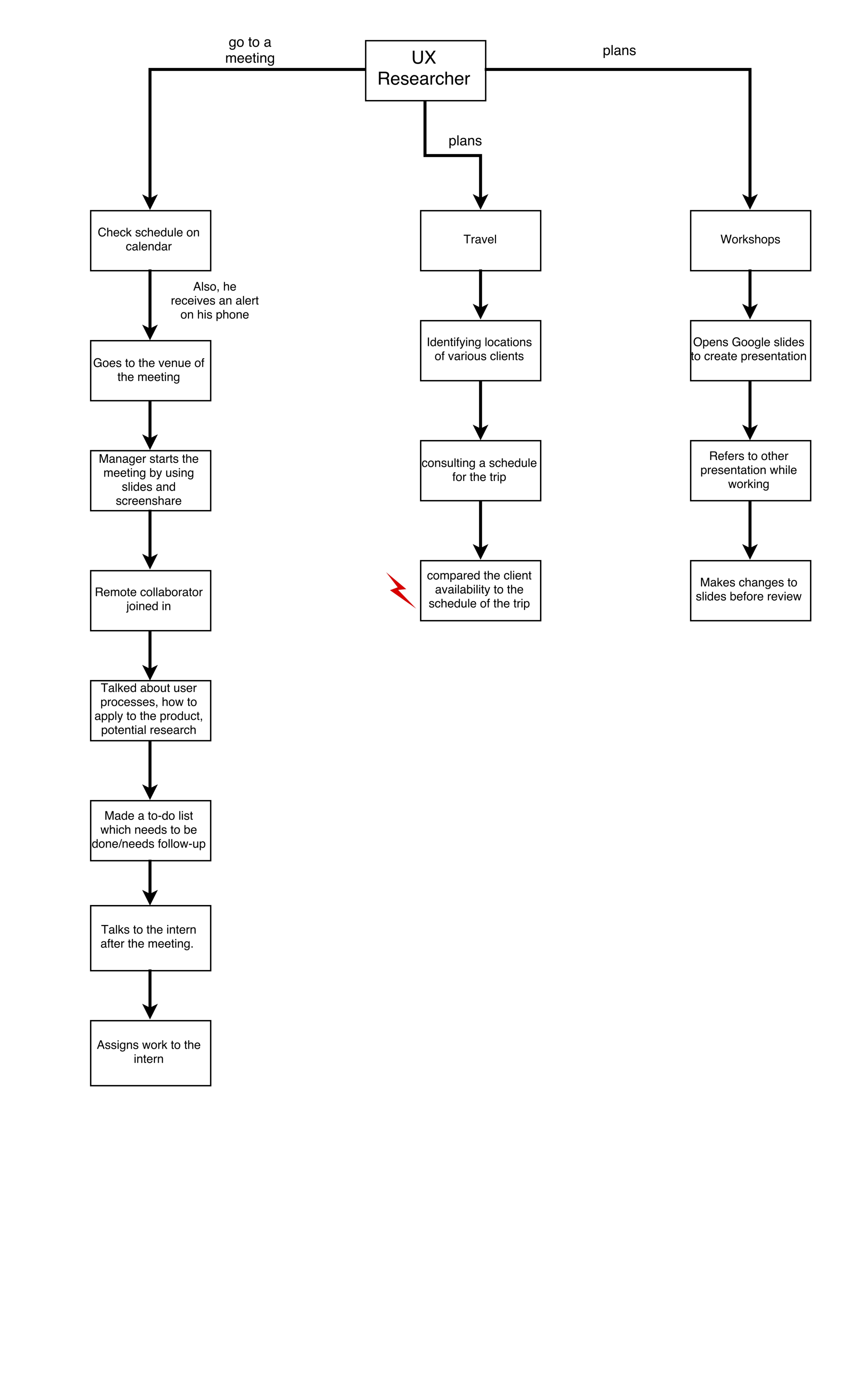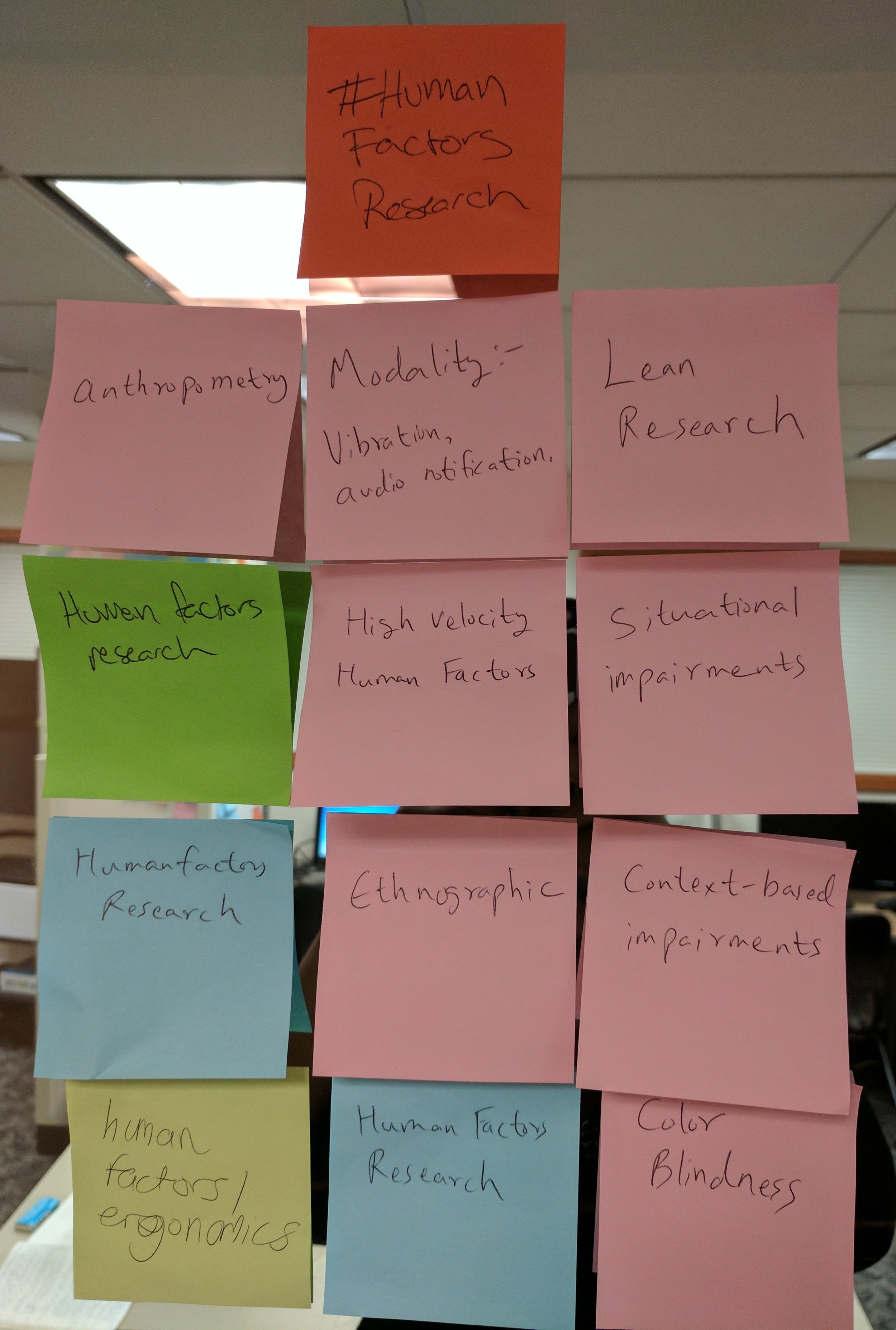How User Experience is Practiced
Duration: Summer Quarter 2017 | Role: UX Researcher (IC)
ACM CHI '18 Conference Research Poster
Problem
We wanted to inform DePaul University HCI academic program about "How User Experience is Practiced" in the industry. This would help (a) instructors teaching in related areas; (b) students looking to enter UX professions; and (c) practitioners interested in learning from each other.
Our Approach
We conducted (a) 16 interviews (involving 22 people) with leadership and practitioners, and (b) job- shadowing observations with 14 of those that we interviewed.
Data collection - Contextual Inquiry
In our interviews with leadership we asked about the organization and hierarchy of their teams. We also asked what they looked for in a new hire. We asked practitioners about their backgrounds, job responsibilities, interactions with peers, tools they used, and artifacts they created. All interviews were audio recorded and transcribed. Two 2-person teams job-shadowed the 14 practitioners for three hours; we were at Company A on-site for five days and Company B for three days.
Data analysis
We evaluated our notes for our three research areas descriptively; i.e., noting organizational hierarchy, tools, artifacts, methods, interactions, and methods of communication/collaboration. For the observations, we also created diagrams to visualize peer interactions; we combined and simplified the diagrams in this paper to exemplify common interactions we observed for each role.
Contextual Design Models
Physical models
The physical models helped us to understand their working style and their interaction with the objects and other people in the workspace.
Flow models
The flow models helped us to understand the overall working procedure in the organization of the practitioners whom we interviewed.
Sequence models
The sequence models helped us to understand the order in which the tasks were carried out by each practitioner whom we interviewed.
Affinity diagram
We filled the discussion room walls with affinity diagrams. It helped us to synthesize the research data we gathered through the interviews and field observations using AEIOU (Activities, Environments, Interactions, Objects, Users) observation framework.
Outcome
There were three key takeaways for HCI academic programs (and to a lesser degree, UX practitioners).
First, our participants came to HCI/UX from diverse backgrounds that included theatre, anthropology and industrial design. Most of our participants did not have degrees in HCI – but instead had transferred their skills. Varied backgrounds strengthened UX teams, indicating the importance of promoting diversity.
Second, related to the first, was the desire for generalists when considering new hires. Academic programs should focus on graduating students with diverse skill sets.
Third, practitioners demonstrated a dynamic adoption of digital tools; inexpensive (and newer) tools designed specifically for UX (e.g. Sketch) were common. Academic programs should consider the dynamic tool- scape in their courses.
Contribution
The team consisted of six members. Following were the members who equally contributed throughout the process:
Dr. Cynthia Putnam (Research Leader)
Mary Bungum (Researcher)
Dan Spinner (Researcher)
Abhinit Parelkar (Researcher & Prototyper)
Silpa Vipparti (Researcher & Prototyper)
Phobey Cass (Researcher)
Publication
Putnam, C., Bungum, M., Spinner, D., Parelkar, A.N., Vipparti, S. and Cass, P. (2018). How User Experience is Practiced: Two Case Studies from the Field. CHI '18 Extended Abstracts, April 21-26, 2018, Montreal, QC, Canada https://doi.org/10.1145/3170427.3188468
Lessons Learned
My key takeaways were:
Open-ended questions (starting with How, What, Why) along with examples plays a key role in encouraging your participants to reveal the information you’re seeking.
Ice breaker is essential to make interviews more conversational that helps both the parties (researcher & participant).
Curiosity and open-mindedness plays an important role in clearing assumptions, conducting observations and reading between the lines.


